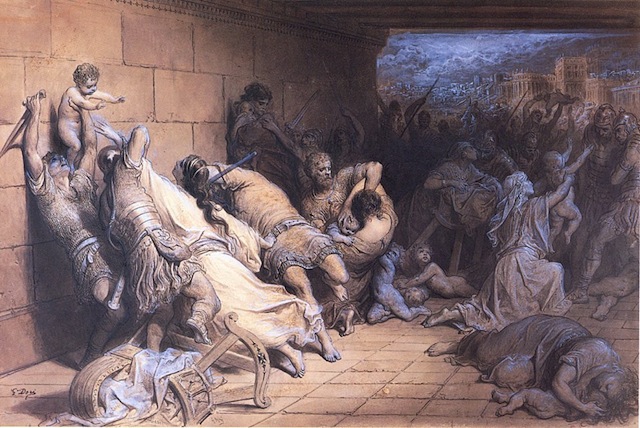“The Coventry Carol” aka “Lully, lullay) is a well-known English carol that many do not realize (a) did not technically start as a Christmas song, (b) may date as far back as the year 1392 but is commonly referred to as being 16th Century in origin, and (c) almost became extinct in 1875. The song melody is commonly credited to Anonymous (1591), and the lyrics to Robert Croo (1534).
As the introduction to the video states, “The Coventry Carol” was first commonly performed in Coventry, England in the 16th Century. It is a hymn that was written to depict Mary’s sorrow over the impending death of her (approximately) two-year-old son, Jesus as required by King Herrod’s edict that all infant boys in Bethlehem be put to death–not very Christmas-like. In fact, in the 16th century, it was performed as part of a play at the annual Shearmen and Tailors Guild annual Christmas pageant (1). That performance along with the fact that it is related to the Feast of the Holy Innocents (also called Childermas) (2), which is celebrated on December 28, and that the song is about the infant Jesus are all contributors to “The Coventry Carol” becoming a standard Christmas carol.

‘Coventry Carol–Lully lullay,’ posted at YouTube by DVIchannel
There are several discrepancies about when “Lully, lullay” was first performed at the Shearman and Tailors Guild Annual Christmas Pageant ranging from 1392 to 1591. One source claims the first mention of the song was in 1392 in reference to the Drapers Guild and the Coventry Mystery Plays which were usually played on Corpus Christi Day. Others say that 1521 is the correct year of origin since it is the earliest known printed rendition of the song lyrics which appeared in the play performed at the Coventry pageant. Yet another source says that 1534 is the earliest appearance in the Coventry play and another claims it to be 1591. Other sources even claim it to be 15th century in origin (3). Whether it is 14th, 15th, 16th, or some combination of these, the song was well known and liked in its early period time as it is today.
In 1875, there was a library fire that destroyed the only completely legible ancient copy of “Lully, lullay.” (4) All the versions we hear and play today are based on two early 19th transcriptions that were badly made and therefore not fully legible in musical score or lyrics. Despite this, many vocalists have recorded the song professionally and even more have sung it locally at their churches and schools.
Much like the song’s clouded history, it is a somewhat dark and sorrowful Christmas song often presented in the key of B flat. Its final note is flexible. It can be settled on the minor, leaving the listener in that same state of sorrow suggested throughout the melody; or it can be lifted to the major, offering the listener a small glimmer of hope.
Sources:
- Coventry Carol Timeline:
- Feast of the Holy Innocents (Brittanica.com)
- Blog By the Sea: Lully, Lullay, Thou Tiny Little Child, post by Teresa Polk, December 27, 2005
- Remembering the Old Songs: The Coventry Carol,by Bob Waltz, originally published in Inside Bluegrass, December 2000
Posted at the Cody Sibley website, Early Music Notes, on December 13, 2010

‘Coventry Carol (Lully, lullay),’ Hayley Westenra,from her album Winter Magic



